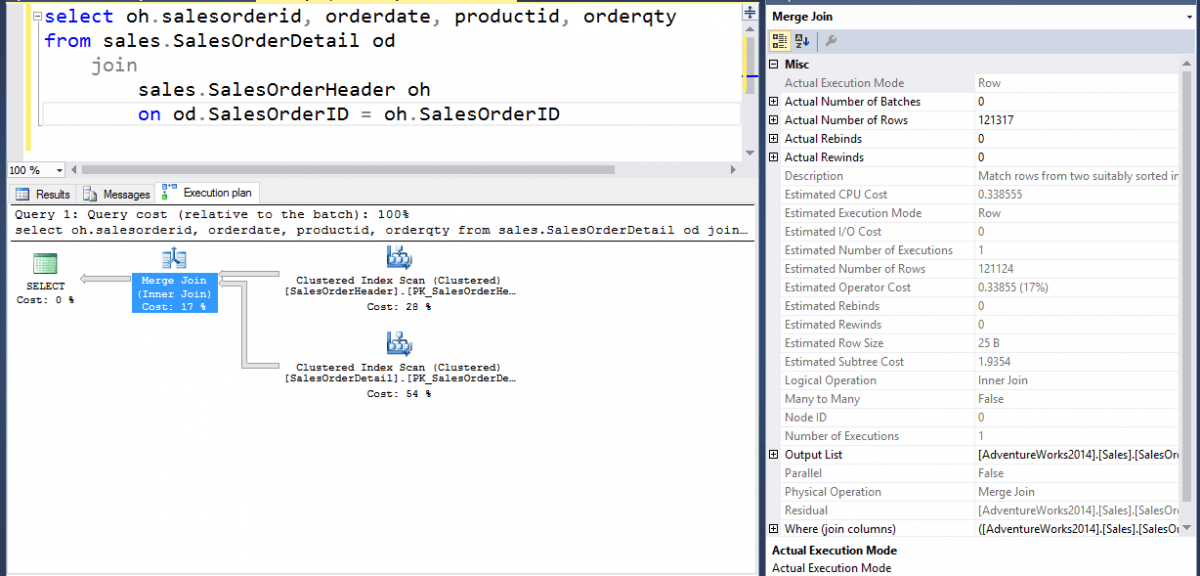Blog Post
SQL Server - Why is this query so slow?


How many times have you asked yourself that question?
If you work with SQL Server based applications then probably quite a few!
No matter what the application you are working with (CRM, Sales Order Processing, Financial Accounting, Contact Management, Booking System (to name but a few!)) there is a database behind it. Most common applications will store their data in either a Microsoft SQL Server Database or an Oracle Database (of course there are other relational database platforms out there).
Poor Database Performance
Things may run smoothly for a time and then you start to hit performance problems. Here are a few common symptoms:
The system is too slow
Tasks are taking too long
Applications running slowly or timing out
Some queries taking forever
Reports running slowly
Data entry taking too long
Database Server not responding very well
Why Is My Database Application Performing Badly?
Your job is to find out why your users are experiencing these problems. Well there is a challenge!
Is it the server?
Is it the client?
Is it the network?
Is it the server hardware?
Is it the server configuration?
Is it the client application?
Is it the way the underlying SQL statement has been written?
Is it the database design?
Is it the server side programming code?
I could go on.
Something is clearly wrong and you need to diagnose the problem and then fix it, but how do you go about that?
SQL Server Architecture
Firstly you need to think about the underlying architecture of your application deployment. Here is a copy of a whiteboard diagram I draw in our SQL Server Performance & Tuning Course.
To successfully diagnose and treat poorly performing SQL Server applications you will need to be familiar with everything depicted on this diagram and how all the components interact, but you will also need to go beyond that. For example the RDBMS box is split into two core components: Relational Engine and Storage Engine.
Without this base knowledge of what is going on behind the scenes it is extremely difficult to successfully troubleshoot SQL Server performance problems.
Did you know that all of the following can affect the performance of a SQL Server application?
Physical Storage
Internal disks or SAN drives
Location of data files and transaction log files
Location of TempDB data and transaction log files
RAID volume type
Number of hard disks
Type of hard disks: HDD, SSD
Physical Resources
Number and type of Processors
Amount of RAM
Network Topology
Bandwidth
Number of Network Cards
Network Library used: TCPIP, Named Pipes
Database Design
OLTP or OLAP
Normalised or Denormalised
Constraints
Triggers
Query Design
Join types
Sub Queries
Views
Aggregation
WHERE clauses
SELECT list
Locking
Blocking and Deadlocks
Locking Isolation Levels
Lock Escalation
Indexing
Clustered or Non Clustered
Covering Indexes: Composite or INCLUDE
Index Statistics
Column Statistics
Index Fragmentation
TempDB
Temporary Tables
Memory Overspill
Row Versioning
Snapshots
This is not an exhaustive list, but it gives you some idea of the many potential influencers on performance.
The SQL Server Database Engine
The Database Engine (RDBMS in my diagram above) consists of two parts: Relational Engine and Storage Engine.
The Relational Engine includes the Query Optimizer which decides whether indexes will be seeked or scanned, or tables will be scanned. It also decides which join algorithms will be used to join record sets (hash, merge or nested loop). How does it decide? By inspecting your SQL statements, by analysing index and column statistics, by assessing IO and CPU costs. There is an awful lot going on behind the scenes, but if you have an understanding of how the SQL Server Query Optimizer works you will find it much easier to write or advise on how to write more efficient queries.
SQL Server Performance Monitoring & Diagnosis
To successfully troubleshoot, diagnose and resolve SQL Server performance problems you will need to adopt a good methodology that works from end to end eliminating potential causes until you are left with likely causes.
SQL Server provides a variety of tools that can help you with this:
Windows Performance Monitor
SQL Server Profiler (deprecated in SQL Server 2014)
Extended Events (replacement for Profiler)
Dynamic management Views
Built In Stored Procedures
DBCC
Data Collection Service
Management Studio Reports
Query Execution Plans
And of course there are many third party tools such as Spotlight from Quest that can also help with identifying the cause of poorly performing SQL Server applications.
Here is a peek at these tools.
Windows Performance Monitor
Every SQL Server instance has a set of counters added to the perfmon collection. In the above screen shot we can see that two counters are for the named instance SQL2014 (the default instance would be referenced as SQL Server).
Performance Monitor is really useful for identifying Windows Server, Hardware and SQL Server instance bottlenecks and when they are occurring. What is difficult to do with perfmon (the program name) is to identify exactly which application, user or query is causing the problem.
SQL Server Profiler
This example of a SQL Server Profiler trace shows a deadlock event that has been captured. We can also see that blocking is taking place.
Profiler enables us to see exactly what was running at the time of a problem, who ran it, where they ran it from, what resources were used, how long it took and plenty more. Filters can be put on the traces to be more specific about what is captured.
SQL Server Extended Events
The above example shows a query has been captured and we can see the resource usage and timings for that query. There are many other events and fields that can be captured.
SQL Server Profiler has been deprecated in SQL Server 2014 although it is still available in SQL Server 2016. SQL Server Extended Events takes over from Profiler.
Extended Events sessions can capture everything that Profiler can capture, but it is much more efficient, has a much lower impact on server performance, and allows for more fine grained (filtered) tracing.
SQL Server Dynamic Management Views
SQL Server is continually collecting performance data behind the scenes and this information is available by querying the vast collection of Dynamic Management views that SQL Server provides. The example above displays information about CPU time for queries running.
The next example shows whether query execution plans are being reused:
We can see what type of plan it is and we can also click on the link on the right to see the execution plan that was used.
There are hundreds of dynamic management views available.
SQL Server DBCC
The DBCC utility has a number of clauses available. Here are two.
The above example shows memory usage for the SQL Server instance. There is a lot more information available from this command, but it does not all fit on a single screen. Try it on one of your SQL Server instances.
The next example shows information on fragmentation of an index:
We can see from this example that the index on the CustomerID column of the Sales.SalesOrderHeader table in the AdventureWorks2014 database is well packed with contiguous extents.
SQL Server Query Execution Plan
The graphical execution plans available in Management Studio enable us to see whether indexes are being used, which join algorithms have been implemented, record counts and costs associated with each step of a query plan. There is a lot more information at our disposal as well, but much of it will make no sense without a good understanding of the internals of the SQL Server Database Engine.
SQL Server 2016 has introduced an execution plan comparison tool. Take a look at this article for a bit more information on that: SQL Server Management Studio (SSMS) 2016 - Compare Execution Plans
Find Out More
This article just introduces some of the SQL Server Performance & Tuning concepts, challenges and tools.
If you would like to learn more about all of the topics mentioned in this article why not take a look at our SQL Server Performance & Tuning Training Course.
Feel free to email us if you have any questions at info@ptr.co.uk.
Share This Post
Mandy Doward
Managing Director
PTR’s owner and Managing Director is a Microsoft certified Business Intelligence (BI) Consultant, with over 35 years of experience working with data analytics and BI.
Frequently Asked Questions
Couldn’t find the answer you were looking for? Feel free to reach out to us! Our team of experts is here to help.
Contact Us


